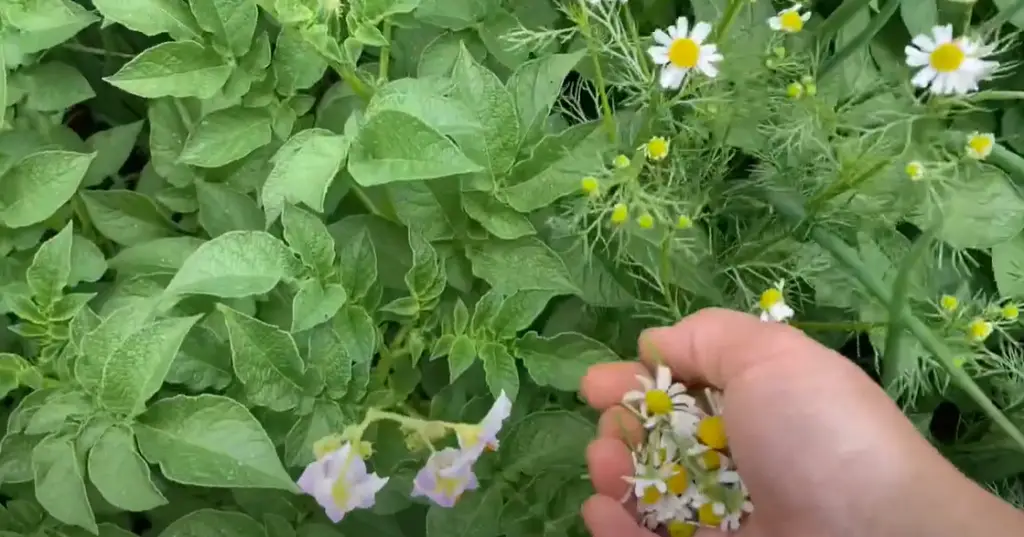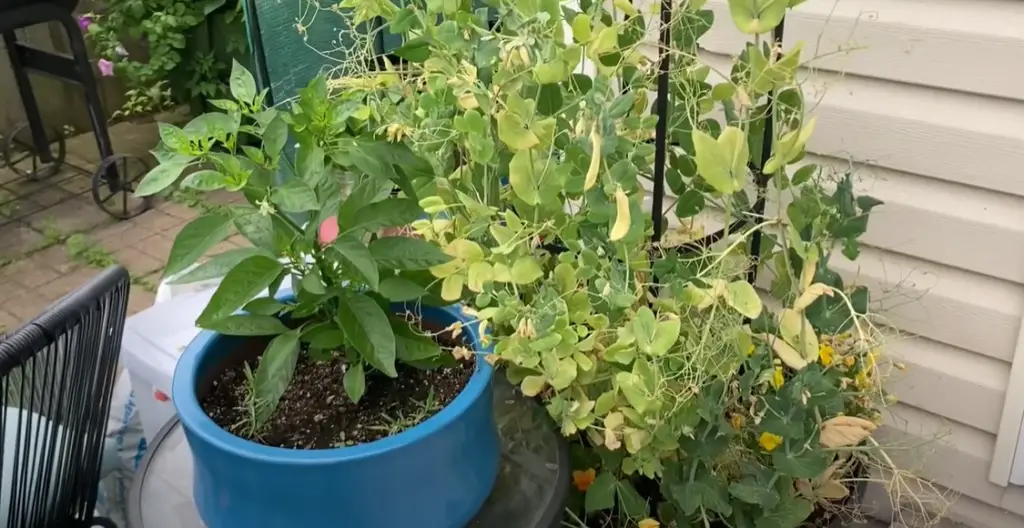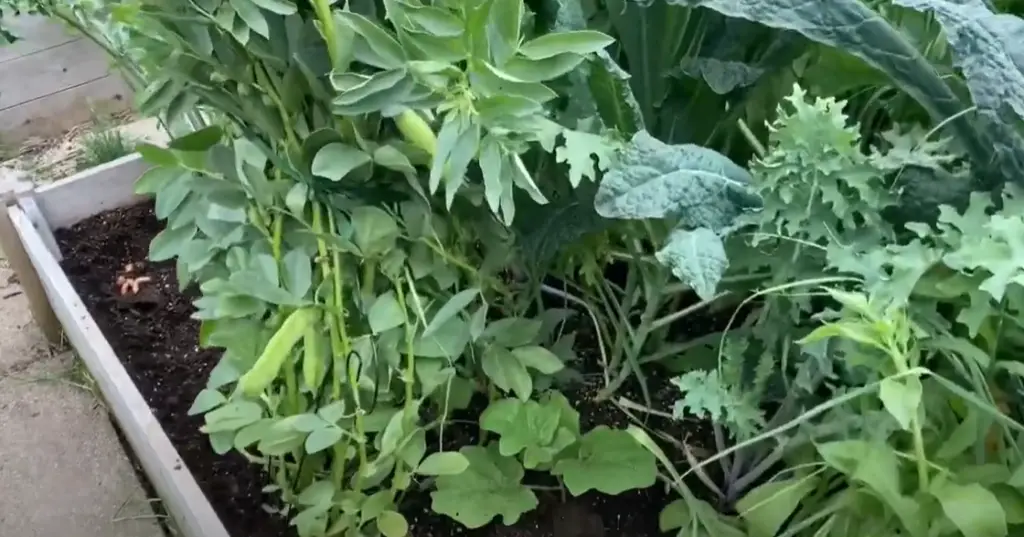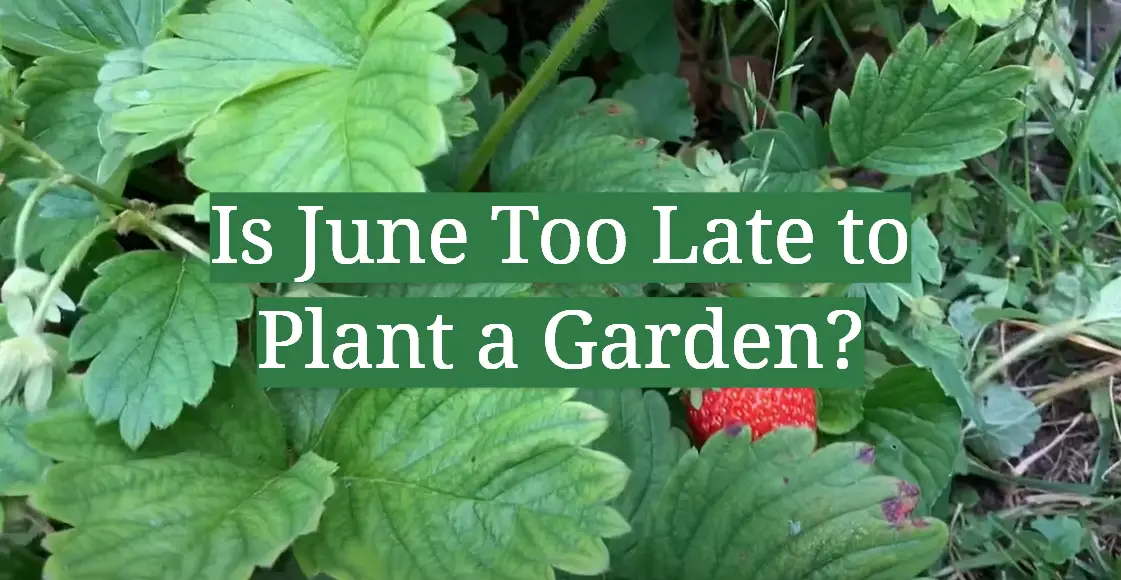Is it too late to plant a garden in June? The answer to this question depends on where you live. If you live in a temperate climate, you may still be able to plant some vegetables in June. However, if you live in a colder climate, it is probably too late to plant a garden this year. This article will discuss the best time to plant a garden based on your location. It will also provide tips for gardening in the summertime!
What is a planting calendar and how does it work?
A planting calendar is a printed or digital guide that helps gardeners plan out when to plant various crops throughout the year. It usually includes information about the best times of year to start seeds indoors and outdoors, the ideal soil temperature range for germination, preferred harvest dates, and suggested crop rotation schedules.
Ultimately, a planting calendar is a great resource for any gardener looking to get the most out of their garden and ensure successful harvests. With the right information and some planning, anyone can create their own custom planting calendar that works best for them [1]!
Calculating Late Planting Dates
Examples of Cool Vegetable Maturation Dates
When calculating a late planting date for cool-season vegetables, it is important to know the average maturation dates of each variety. Maturation dates vary by type of vegetable and can range from as few as 50 days after transplanting for some lettuces to as many as 150 days for cauliflower.
Examples of cool-season vegetables with their corresponding maturation dates are listed below:
- Lettuce: 50-60 days
- Spinach: 40-45 days
- Broccoli: 80-100 days
- Cabbage: 90-120 days
- Kale & Collards: 65-80 days
- Carrots & Parsnips: 70-100 days
- Brussels Sprouts: 100-130 days
- Cauliflower: 85-150 days.
By adding the average maturation dates to the last possible planting date for cool-season vegetables in your area, you can determine when the optimal late planting date is for each type of vegetable. For example, if your region has a recommended last planting date of August 1st for broccoli, then the optimum late planting date would be October 20th (August 1st + 80-100 day maturation period). Taking into account potential differences in weather conditions and soil temperatures, it may be wise to give yourself an extra two weeks before this deadline to make sure all of your vegetables have enough time to mature.

Apply Maturation Days to Calendar
Once you have identified the maturation dates for each type of vegetable, it is important to apply them to your seasonal calendar. Using the above example, if you wanted to plant broccoli in late summer, you should plan on planting it around August 1st so that it has enough time to mature before the first frost date. Depending on the weather conditions and soil temperatures in your area, this may need to be adjusted by a few weeks either way.
It is also important to note that some vegetables are more tolerant of cooler temperatures than others. Lettuce and spinach can usually handle light frosts, while broccoli and cabbage can usually tolerate temperatures down to 20 degrees F (-7 C). Thus, when calculating late planting dates for these cool-season vegetables, take into account both their maturation dates as well as the average frost date for your region.
Find Your Zone
It is important to know your USDA Hardiness Zone when calculating late planting dates for cool-season vegetables. This can help you determine the average last frost date in your area and adjust your late planting dates accordingly. Most vegetable seed packets will list the optimal planting times for different hardiness zones, so be sure to check this before buying any seeds or starting any projects.
Timeline for Planting
By combining all of the above information, you can create a timeline for when to plant each type of cool-season vegetable in your area. When planning out your garden and deciding which varieties to grow, it is essential to keep this timeline in mind so that your vegetables will have enough time to mature before the first frost.

Temperature Concerns
It is important to consider the average temperature in your area when calculating late planting dates. Cool-season vegetables can tolerate light frosts, but prolonged periods of cold can have a detrimental effect on their growth and yield. Keep an eye on the forecast and be prepared to cover or move your plants if temperatures start to dip below 20 degrees F (-7 C).
Example for Calculating Last Planting Date
Let’s say you live in Zone 5 and want to plant broccoli in late summer. According to the USDA Hardiness Zone map, the average last frost date for this area is April 15th. To calculate the optimum late planting date for broccoli, you would add 80-100 days (the maturation period) to April 15th. This gives us a final planting date of July 5th – August 4th.
As mentioned before, it is important to give yourself some leeway when calculating late planting dates, as weather conditions can vary from year to year. Taking into account potential differences in temperature and soil conditions, it may be wise to give yourself an extra two weeks before this deadline to make sure all of your vegetables have enough time to mature [2].
Which Vegetable Seeds Can You Sow in June?
June is a great month to start sowing vegetable seeds, as long days and warm temperatures are perfect for getting seedlings off to a healthy start. Some of the best vegetables to sow in June include beans, cucumbers, radishes, squash, beets, and carrots.
Squash should also be direct-sown outside with good drainage and plenty of sunlight. Beets and carrots do best if started in seed trays indoors before being transplanted out into the garden a few weeks later. When sowing vegetable seeds, make sure to keep the soil evenly moist until germination occurs. Once seedlings appear, thin out any overcrowded plants for better growth and health. With a bit of care and attention, you can enjoy a bountiful harvest this summer [3]!
When to Plant Your Vegetable Garden?
Planting early crops
When it comes to planting your vegetable garden, timing is everything. It’s important to choose a good time of year for planting so that the vegetables will have enough time to mature before the onset of winter or other unfavorable conditions. In general, early crops like peas and spinach can tolerate temperatures down to about 25-30 degrees Fahrenheit (-3.9 to -1 Celsius) and should be planted as soon as the soil can be worked in spring.
Late summer and fall crops such as broccoli, cauliflower, and cabbage should also be planted in late summer or early fall so they have time to mature before cold weather sets in. However, if you live in an area with mild winters, you may be able to extend your growing season and plant these vegetables a bit later.

Planting mid-season crops
Mid-season vegetables, such as tomatoes and peppers, should be planted in late spring or early summer when the soil has warmed up and the risk of frost has passed. These vegetables need a longer growing season than early crops, but they don’t need to be started as early in the year. If you live in an area with mild winters, you may even be able to plant these vegetables in late summer or fall for an extended growing season.
Planting late crops
Late-season vegetables like carrots, potatoes, and winter squash should also be planted in late spring or early summer so that they have plenty of time to mature before cold weather sets in. In areas with mild winters, these vegetables can sometimes be planted later in the season for an extended growing period. However, it’s important to note that some late-season vegetables don’t tolerate cold temperatures very well and may need extra protection from frost.
Planting hardy crops
Hardy vegetables such as kale and Swiss chard can tolerate colder temperatures and may be planted earlier in the year, even before the last frost has passed. In areas with mild winters, these hardy vegetables can even be planted in late summer or early fall for an extended growing period.
Planting tender crops
Tender vegetables such as beans, cucumbers, and melons should be planted after there is no risk of frost. These vegetables need warmer temperatures to thrive, so it’s important to wait until the soil has warmed up before planting them. In areas with mild winters, these crops can sometimes be planted in late summer or early fall for an extended growing period.

Tips for a Thriving June Garden
- Timing is everything – Plant your vegetables promptly to ensure that they get plenty of sun and water throughout the season. The best time for planting vegetables like peppers, tomatoes, squash, and melons is late May or early June. For greens such as lettuce and spinach, mid-June is ideal.
- Start a compost pile – Composting is an easy way to create rich soil for your garden without having to buy expensive bags of fertilizer. Collect fruit and vegetable scraps from your kitchen, yard waste such as leaves and grass clippings, coffee grounds, eggshells, manure from animals on your property (if you have them), and other organic materials to start a compost pile.
- Mulch your soil – Even a layer of mulch just an inch thick can help conserve moisture, increase the fertility of the soil, and keep weeds from invading your garden. Organic mulches such as straw, sawdust, or shredded bark are ideal for June gardens since they decompose over time and add nutrients to the soil.
- Water deeply and infrequently – Give your garden deep, thorough watering about once per week instead of frequent light watering every day. This encourages the roots of plants to grow deeper into the soil in search of moisture.
- Use companion planting techniques – Companion planting is an ancient technique that pairs certain vegetables with each other to maximize their growth potential while also deterring pests and disease. Planting marigolds near tomatoes and basil can help protect the tomatoes from harmful pests, for example.
- Prune and deadhead your plants – Removing wilted or dead leaves and flowers encourage healthy growth in the new season and prevent diseases from taking over your garden. Be sure to do this regularly throughout June and the summer months.
- Monitor for pests – Keep an eye out for potential insect invasions such as aphids, cutworms, slugs, beetles, caterpillars, etc., which can wreak havoc on your June garden if left unchecked. Hand-picking them off is a safe way to manage small infestations; however, more serious outbreaks may require natural or chemical pest control products.
- Enjoy the harvest – Nothing quite compares to the feeling of harvesting a plentiful crop from your garden. Take time to savor each delicious bite and be sure to share with family and friends [4]!
FAQ
What is the best month to plant a garden?
The best month to plant a garden depends on the type of plants that you want to grow. In general, if you live in cooler climates (such as those found in North America), the best time to plant a garden is typically between April and June. This will give your plants plenty of time to become established before winter arrives. However, if you live in more temperate climates (such as those found in Central and South America), planting season can occur throughout most of the year, with some hardier crops such as tomatoes being able to be planted earlier than others.
What is the best time to plant vegetables?
The best time to plant vegetables depends on your climate and the type of vegetable you are planting. Cool-season vegetables (such as broccoli, cabbage, lettuce, radishes, and spinach) do best when planted in early spring or late summer/early fall. Warm-season vegetables (such as corn, cucumbers, squash, and tomatoes) are typically planted once the danger of frost has passed and soil temperatures have warmed up. Generally speaking, most vegetables should be planted around two weeks after the last spring frost date for your area.

How often should I water my garden in June?
The frequency of watering your garden in June depends on several factors, such as the type of plants you are growing and the amount of rainfall your area receives during this month. In general, you should water your garden at least once a week, more if it is extremely hot or dry. It is also important to check the soil moisture level before watering – if the top few inches of soil feel moist to the touch, then there may be no need to water. Additionally, it is recommended to water deeply but infrequently rather than lightly every day; doing so will encourage stronger root growth and help plants better withstand periods of drought.
What vegetables grow best in cooler climates?
Cool-season vegetables (such as broccoli, cabbage, lettuce, radishes, and spinach) are well-suited to cooler climates and typically do best when planted in early spring or late summer/early fall. Other vegetables that can tolerate slightly cooler temperatures include beets, onions, peas, potatoes, and turnips. In addition, some hardier varieties of tomatoes may also be able to withstand lower temperatures if provided with adequate protection from frost.
What is the best way to fertilize my garden?
The best way to fertilize a garden depends on what type of plants you are growing and the soil conditions. For most vegetable gardens, organic materials such as composted manure or aged animal waste provide essential nutrients for plant health. Additionally, chemical fertilizers can be useful for supplementing deficient minerals in the soil.
Useful Video: How to Tell When It’s “Too Late” To Start A Garden
Conclusion
Planting a Garden in June is an excellent way to maximize the growing season and have an abundant harvest. It can be both a fun and rewarding experience if you plan and provide your plants with the right environment and care. Planting in June allows for more time to grow fruits, vegetables, herbs, and flowers through autumn weather. The key is to choose the right type of plant that is suited for your climate zone. Additionally, it’s essential to maintain regular watering schedules, use proper pest control methods, and thoroughly weed beds before planting. With some patience and dedication, you can create a beautiful garden full of life that will last through the summer months into autumn.
References:
- https://gilmour.com/planting-calendar
- https://garden.lovetoknow.com/garden-basics/when-is-it-too-late-plant-garden
- https://www.thespruce.com/direct-sow-vegetables-in-june-garden-2540004
- https://ecoanouk.com/is-june-too-late-to-plant-a-garden/










Leave a Reply
View Comments